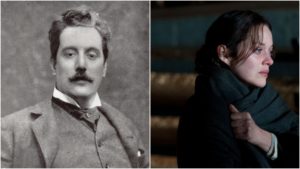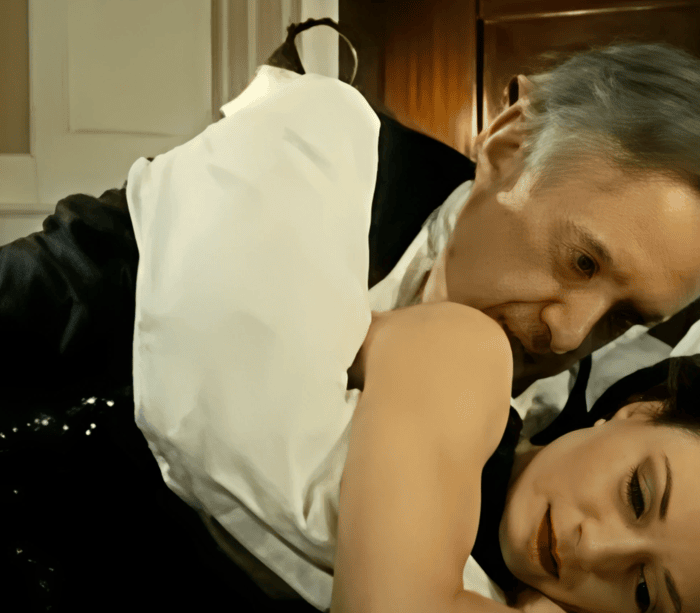
Opera Meets Film: How James Gray Explores Puccini’s Heroines In ‘The Immigrant’
By Francisco Salazar“Opera Meets Film” is a feature dedicated to exploring the way that opera has been employed in cinema. We will select a section or a film in its entirety, highlighting the impact that utilizing the operatic form or sections from an opera can alter our perception of a film that we are viewing. This week’s installment we will take a look at James Grey’s ode to opera, “The Immigrant.”
It is a well-known fact that when James Gray wrote “The Immigrant,” he was inspired by opera, specifically a performance of “Suor Angelica” directed by William Friedkin. As he noted to his wife after seeing the Puccini work at the LA Opera, “You know, they don’t make movies about women anymore….’Why don’t you make one?'”
The result was 2013 critically-acclaimed film that showcases a character heavily influenced by many of Puccini’s heroines and a musical score that borrows extensively from the Italian composer. For this article, we will discuss Puccini and its influence and in a later article, we will go on to discuss the use of Verdi, Gounod, Wagner, and Berlioz in this operatic film.
Ewa & Suor Angelica
When Gray discussed the character of Ewa, he said he wanted to create a character that was similar to the sin-haunted nun Sister Angelica. In many ways, Ewa is haunted by her past. She leaves Poland in search of a new life with her sister and during her journey she must act in what society calls inappropriate ways to survive. As she explains, she has to steal to be able to survive in a ship where passengers are treated like animals and not given food. But these actions are called “morally wrong” and from the moment she gets to the U.S., she is haunted by these actions. She is almost deported from the U.S. and her uncle betrays her by calling the police. Never is Ewa safe in the film and she constantly finds herself running and hiding from her past.
And that makes her very similar to Suor Angelica. Angelica is also hiding as she was sent to the convent for her sins. Angelica wants to know from her family but her sins of the past have prevented her from returning home. And when she finally sees her aunt, she is told to give up her inheritance. Unlike Ewa who is finally able to escape, Angelica kills herself when she hears her son has died.
But Gray goes further in his parallels with another Puccini heroine, Magda.
Ewa & La Rondine
In “La Rondine,” Magda is a libertine woman who has been with numerous men. Her past prevents her from being happy when she finally finds love in Ruggero. Gray employs “La Rondine’s” final duet and uses it as a love theme for Orlando, the magician, and Ewa. Each time the two meet the sweeping lines of Puccini’s score are evoked to connect them.
It is through this theme that Gray announces the fact that these two will never be together. At the end “La Rondine,” Magda chooses to leave her lover because she believes her past makes her unqualified for him. Meanwhile, Ewa, who becomes a prostitute, tries to flee but Orlando is killed.
Both Gray and Puccini are commenting on the societal restrictions on these women. It is as if no matter how hard they try, women like Ewa and Magda will never reach the happiness they desire.
Ewa & Manon Lescaut
The opening chords of the film express Manon Lescaut’s theme in Puccini’s opera and throughout the film, one can hear the theme transformed in numerous ways. To compare Manon and Ewa would be quite a stretch as Manon is a free spirit while Ewa is reserved and quiet. But they are both victims of circumstance who are repressed by men and who are both corrupted by societal norms.
Manon is obviously corrupted by her greed and lust for money but at the same time, she is also captivated by her love for Des Grieux while Ewa forces herself into prostitution to obtain enough money to save her sister. Both attempt to act liberally but ultimately it is the men who surround them that create their misery.
Manon is first forced by her parents and brother to go to the convent but ultimately escapes. Then when she decides to flee from Geronte, she is imprisoned for being a woman of pleasure. And if you go to the source material, when Manon arrives in America she attempts to rebuild her life but, ultimately, men’s lust for her force her to flee and ultimately die of starvation.
Meanwhile, it is Bruno who plots Ewa’s deportation in order to force her to work for him. As he reveals at the end of the film, Bruno puts her uncle against her and creates the circumstance so she is forced to ask him for help. His lust for her controls the whole plot, subjugating Ewa to do whatever Bruno wants. And as the film moves forward, the Manon theme works in minor chords to create the darker character of the film.


